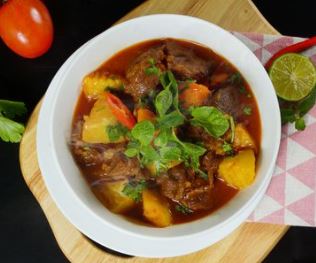What is "nikujaga"? Japan's typical mama's dish
CONTENTS
Nikujaga Born from Heihachiro Togo’s Half-Remembered Recipe
History of Nikujaga
Together with miso soup, Nikujaga (meat and potatoes) is always counted among the tastes of Mom's home cooking. Representative of home cooking, Nikujaga is a national dish that is included nearly always in the menus of folksy restaurants, bars, and company cafeterias. With its slightly sweet flavor and texture of potatoes that are soft but not soggy, Nikujaga’s image is associated with tenderness or gentleness. However, Nikujaga has its roots in the military food of the Meiji Era (1868 to 1912). It is said that Heihachiro Togo who was Commander-in-Chief of the Combined Fleet at that time had ordered Nikujaga to be made.

Nikujaga is based on beef stew
Heihachiro Togo was an elite naval officer who had studied abroad in England at the beginning of the Meiji Era and later on took office as Commander-in-Chief of the Maizuru Naval Base. During the Russo-Japanese War, Heihachiro became a hero for his success in driving back the Baltic fleet.
Unable to forget the taste of the beef stew he had eaten while in England, Heihachiro one day ordered a navy cook to recreate the beef stew. The cook was at a loss. Without having ever seen beef stew, the only recourse the cook had to go on was Heihaciro's faint memory of the recipe. Not being able to obtain English wine or sauce, the cook in dire stress stewed beef and potatoes together and flavored them with soy sauce and sugar that were close at hand. Thus was created Nikujaga. The dish was not even close to being beef stew. But upon eating it, it was actually quite delicious. The navy became to enjoy eating Nikujaga as a dish that provided well balanced nutrition from vegetables and meat cooked together. Before long, Nikujaga also spread to ordinary households.
Nikujaga born in Hiroshima or Kyoto?
Nikujaga, which also used to be known as Amani (sweet stew), has created an unexpected ripple nearly 100 years later in the current era of Heisei (1989-). The two cities of Maizuru in Kyoto Prefecture and Kure in Hiroshima Prefecture have both claimed to be the birthplace of Nikujaga.
In 1901, Heihachiro took office as the first Commander-in-Chief of the Maizuru Naval Base. Before that, Heihachiro had been newly appointed as the Chief of Staff of the Kure Naval Base. Because it is uncertain when and where Heihachiro had first ordered Nikujaga to be made, a controversy on the birthplace of Nikujaga has arisen.
Finally, in 1998, a decision on which city was the birthplace of Nikujaga came to a showdown in Kure City. In the showdown, the citizens of Kure City were to taste the Nikujaga from the two cities and decide the winner. The contest, however, ended in a draw. In their Nikujaga, Kure City used a simple flavor that adhered to an old navy recipe of meat, potatoes, ito konnyaku and onions. In contrast to this, Maizuru City added original ingredients such as green peas to their Nikujaga in order to arrange it in a modern style.
- Categories
- Work in Japan: Japan Biz Cultural Words and 未分類
- Tags
- history of nikujaga


